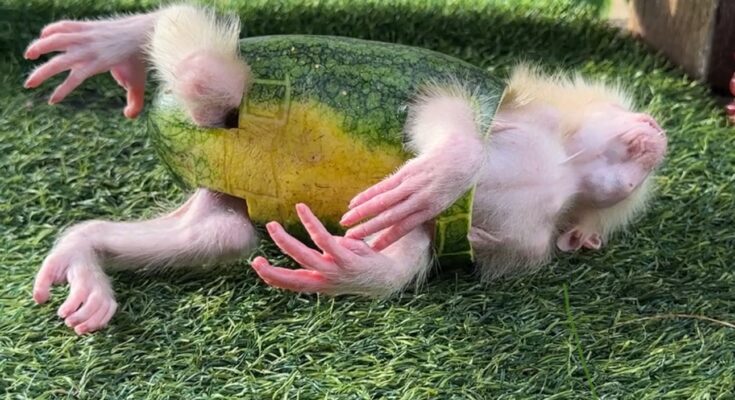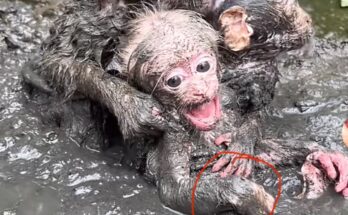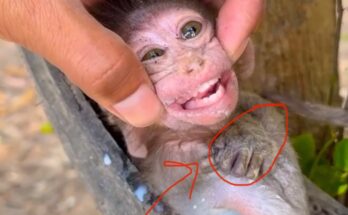In the world of animals and viral internet moments, few things are as delightfully surprising as a baby monkey sitting inside a watermelon rind. What may seem like a funny or cute setup actually offers a peek into animal behavior, natural curiosity, and human fascination with nature. But what really happens when a baby monkey finds itself inside this juicy fruit shell?
A Natural Cradle
Watermelon rinds are surprisingly sturdy and bowl-shaped once the fruit is scooped out. To a baby monkey, this can seem like a cozy little seat or an improvised cradle. The smooth inner surface is cool and moist—especially refreshing during hot weather. Baby monkeys, much like human toddlers, are curious by nature. Their first reaction is often to explore, sniff, and lick their surroundings. Inside a watermelon rind, they might squirm around, feel the texture with their hands and feet, and even try to nibble on the leftover fruit bits.
Playtime Turns into Snacktime
Monkeys are natural foragers. They instinctively investigate food sources, especially those that are sweet and hydrating. Watermelon is both. When a baby monkey is placed inside a watermelon rind, it typically doesn’t take long before it begins munching on the remaining pink flesh or licking the rind. This becomes a playful snack session. They might even toss bits around or offer pieces to nearby companions, especially in social species like macaques or capuchins.
Sensory Discovery
The experience is rich in sensory stimuli. The baby monkey can feel the slipperiness of the rind, the stickiness of the juice, and the softness of the fruit. These tactile sensations are crucial for developing young monkeys as they learn about the world through touch, smell, and taste. Being in a watermelon rind offers them a unique environment to explore—much like a sandbox or jungle gym for a human child.
Viral Moments and Caution
Videos and images of baby monkeys in watermelon rinds have gone viral across platforms like YouTube, Instagram, and TikTok. The sheer adorableness of a tiny monkey nestled in fruit has universal appeal. However, it’s important to note that wild or exotic animals should never be used solely for entertainment. When done ethically—under the supervision of wildlife caregivers or sanctuaries—such moments can be harmless and even enriching for the animal. But forcing an animal into an unfamiliar situation just for content can cause stress or harm.
An Unexpected Enrichment Tool
Interestingly, many wildlife sanctuaries and zoos use fruits like watermelon for enrichment. Hollowed-out rinds can serve as feeding bowls, toys, or temporary “nests” for young animals. They offer a combination of nutrition, play, and stimulation—important for both mental and physical development.
Conclusion
A baby monkey in a watermelon rind is more than just a cute image. It’s a blend of natural curiosity, playful behavior, and environmental enrichment. While it might start as a funny moment, it also highlights how creative tools from nature can support animal learning and joy—when used respectfully. Next time you see such a scene, look beyond the cuteness and appreciate the monkey’s moment of discovery.



